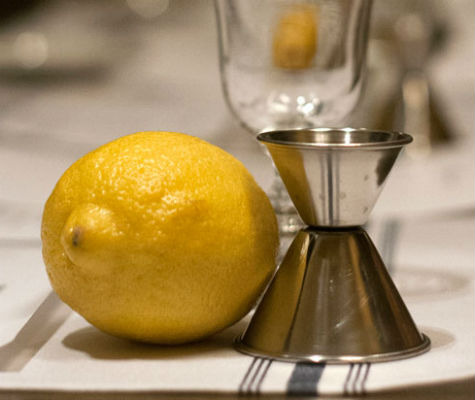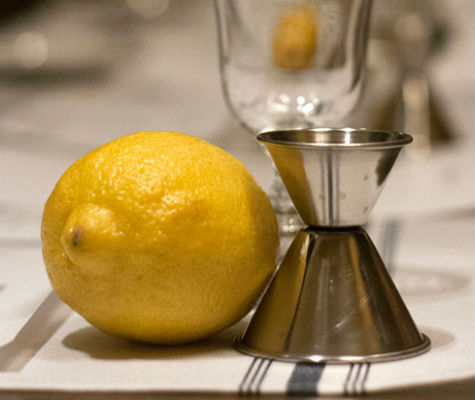How To Be A Great Home Bartender
You've been thinking about it since last year's office holiday party. You opened your Secret Santa gift to find a semi-fancy bar set, and the cocktail wheels started to turn. It came with a few tools you recognize — a corkscrew, maybe, or a vegetable peeler — and maybe some you don't quite know what to do with. But the gift planted a seed in your mind, and every time you dig through the miscellaneous drawer in your kitchen, and you see the still-unopened box chilling next to the mismatched hand beater attachments, you think, "I should really get going on building that home bar I've always wanted." Then, you start to consider all that goes into making a proper bar, all the liquor and equipment and technique you need to acquire to make the effort worthwhile, and your mind flees. "It's too intimidating! I don't know what I'm doing! It's going to cost too much money!" So, you close the drawer and retreat from the idea until the next time you have to dig for a turkey baster, and see the sad, unused gift staring back at you again.
How to Be a Great Home Bartender (Slideshow)
Fear not, intrepid drinker — I'm here to help. What follows is part one of an ongoing series designed to help you, the cocktail enthusiast, become the home mixologist you've always dreamed of being. And it's not as difficult or expensive as you might expect.
Today, we'll cover the basics. Think of this as a quick-start guide, a foundation on which to build. The accompanying slideshow illustrates the gear, the booze, the techniques, and a few classic recipes to get you up and mixing fast.
A few things first — when buying your bar equipment, I recommend you steer clear of the fancy stuff you might find in gourmet specialty shops, or on the racks at your local liquor store. The shakers you find with the attached strainers, the ornate show-tools with wooden handles and pearl inlays, the stuff you may have found in a gift-set from your Secret Santa — these are not the utensils of a pro. It's usually the wrong size, may be harder to use, and will definitely make the learning process more taxing. Instead, find your local restaurant supply store, and source your stuff from there. Not only is the hardware made better, it's almost always a damn sight cheaper.
Also, don't feel like you have to make a huge investment right away just to make the effort worthwhile. Think of a home bar like a curated collection, one that will grow with time and necessity. Get the basics listed here, and then, when it's time to throw an afternoon mojito party, or a 1920's Prohibition soiree, go out and get what you need then. The more new drinks you want to learn, the more your bar and mixing expertise will grow, and it won't take a huge chunk of change all at once to do it.
Check back often for more installments of this home bartending guide. I'll show you the nitty gritty of what gear, liquor, and recipes you'll need to be the toast of any cocktail party you throw.
Gear: Cocktail Jiggers
After all my years behind a bar, I still prefer to use jiggers to measure out my cocktails instead of the unreliable speed-pour counting method. Jiggers guarantee you'll mix the same drink every time. I keep three sizes: the ½ ounce / 1 ounce; the ¾ ounce / 1½ ounces; and the 1 ounce / 2 ounces
Gear: Boston Shaker
Comprised of a basic pint glass and a larger metal shaker cup, this is the most-used tool you'll keep behind your bar. Add your ingredients to the shaker glass, then, depending on the cocktail, either stir it in the glass, or fit the shaker cup over top of the glass and shake vigorously until the drink is cold.

